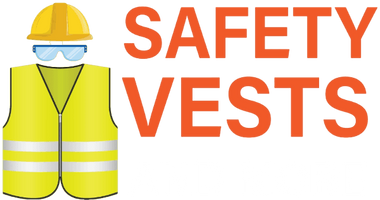
What Does a Traffic Cone Look Like?
Traffic cones are vital safety devices that are used all over the world to control traffic flow, identify dangerous locations, and offer directions in a variety of situations. They are conical in shape, made from long-lasting materials, and brightly colored to maximize visibility. Because of their unique design and versatility, they are important for road safety, construction zones, and crowd control. In this blog, we will learn about the various types of traffic cones, their uses, sizes, and overall importance in maintaining safety and order.
Types of Traffic Cones
There are different types of traffic cones, each having a different function. Here are some common types:
-
Standard Orange Traffic Cones
Orange traffic cones are the most popularly known traffic cones; they are commonly used on roads, highways, and construction sites. Their reflective collars and vivid orange color improve visibility both at night and during the day.
-
Collapsible Traffic Cones
The purpose of collapsible traffic cones is to facilitate storage and transportation. They can be folded down when not in use and expanded as needed because they are composed of flexible materials. These are suitable for drivers, emergency personnel, and short-term traffic control scenarios.
-
Weighted Traffic Cones
These cones have a heavier base to prevent them from tipping over in windy conditions or on high-speed roads. They are helpful on highways and construction sites where stability is most essential.
-
Reflective Traffic Cones
They are designed with high-visibility reflective strips, and reflective traffic cones offer maximum visibility in low-light conditions. They are commonly used in tunnels, dimly lit areas, and nighttime road construction.
Sizes of Traffic Cones

Traffic cones come in various sizes, each one having a specific purpose. To make sure they meet visibility and regulatory requirements, it is very essential to choose the right size.
-
12 inch (3 lbs): Suitable for indoor applications, low-speed areas, and school zones.
-
18 inch (3 lbs): Ideal for maintenance tasks, parking lots, and streets with little traffic.
-
28 inch (7 lbs): Commonly used on city roads and highways for greater visibility.
-
36 inch (10 lbs): Approved for use on public roads (high-speed roads) at night, efficient use for any situation aligning with traffic safety standards.
Uses of Traffic Cones
Traffic cones provide a broad range of purposes beyond road safety. Some of their important uses include:
-
Roadway Safety and Traffic Management
Traffic cones are mostly used to direct cars through areas that are prone to accidents, detours, and construction zones. They prevent confusion and reduce the risk of accidents by clearly marking traffic patterns.
-
Event and Crowd Control
Traffic cones are needed at public gatherings, sporting events, concerts, and festivals to control pedestrian flow, mark parking lots, and block off restricted areas.
-
Parking Lot Organization
Traffic cones are used by various companies, educational institutions, and retail malls to reserve parking spaces, guide cars, and keep parking lots orderly.
-
Emergency and Hazard Warnings
In emergencies such as electrical hazards or damaged pavement, traffic cones are used as warning signs to alert pedestrians and drivers about the dangers.
-
Utility and Maintenance Work
To identify areas that need repairs, such as resurfacing roads, water line maintenance, or electrical repairs, maintenance teams and utility companies also use traffic cones.
Importance of Traffic Cones
Traffic cones play a very crucial role when it comes to safety and order in different environments. Here’s why they are so important:
-
Enhanced Visibility
Traffic cones are usually designed in vivid colors, like orange or lime green, to make both pedestrians and cars see them easily. To make traffic cones visible at night or in poor weather conditions, reflective collars are used
-
Portability and Ease of Use
Traffic cones are quick to deploy, portable, and lightweight. This is the reason they are highly effective in situations of emergency where immediate action is required.
-
Versatility
From road safety to sports training, traffic cones can be used for anything. Their ability to quickly demarcate areas makes them useful in multiple industries.
-
Cost-Effective Safety Solution
As compared to other traffic control devices, traffic cones are very effective and budget-friendly. They are very useful for temporary traffic management as they offer budget-friendly solutions.
Traffic cones play a very important role in ensuring safety, although they are very straightforward items. For traffic control, crowd management, or hazard warnings, they offer a practical and economical solution. It is easier to guarantee that traffic cones are used correctly in different situations when one is aware of their various sizes, types, and applications.
By following safety regulations and choosing the right traffic cones for particular purposes, organizations and individuals can help create a safer and more effective environment for everyone.
Frequently Asked Questions
What is the purpose of traffic cones?
Traffic cones are used in parking lots, roads, and construction sites to direct traffic, mark dangerous areas, and manage crowds.
Why is it necessary to use traffic cones?
Traffic cones prevent workers and pedestrians in dangerous or busy areas from accidents, enhance traffic flow, and warn people of potential hazards.
What is a traffic cone?
The traffic cone is used to control traffic, alert drivers to possible dangers, and guide traffic in designated areas, traffic cone is a conical safety marker that is usually composed of rubber or plastic
What are the benefits of using a traffic cone?
Traffic cones are temporary traffic control and hazard-marking devices that enhance visibility, road safety, and ease of deployment and transportation. They are very budget-friendly.
